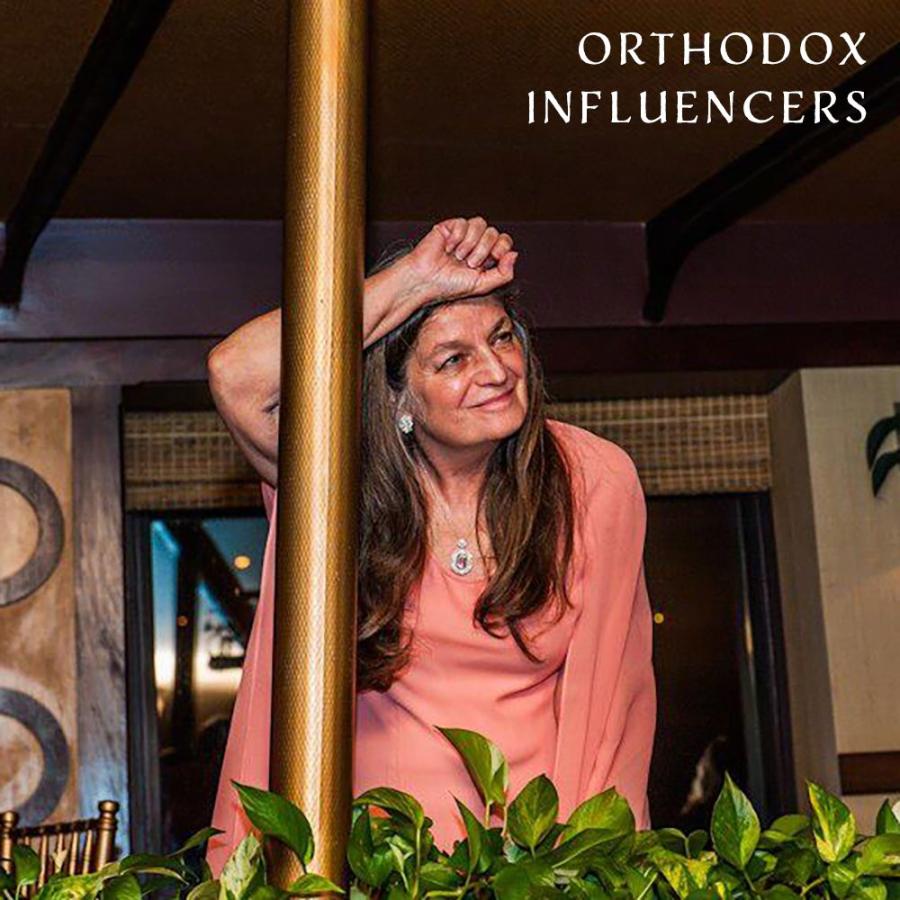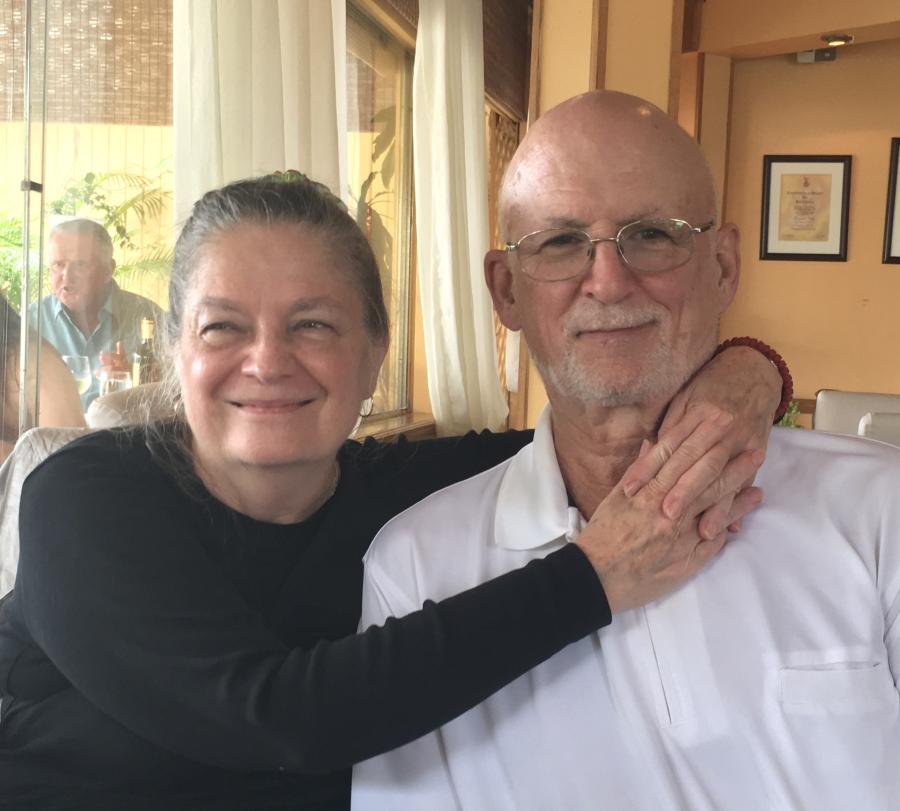
This week our Orthodox Influencer, Dr. Lila Kalinich, has two writers testifying to her influence on the church, His Grace Bishop Irinej (Dobrijevic) and Fr. Alexis Vinogradov:
Lila Kalinich – My Kuma
I consider myself to be a godson of Lila Kalinich. In the Serbian tradition, although she was not my godmother at baptism, because her brother-in-law, who married her older sister, was my godfather, we extended that relationship (we call it kumstvo) to the entire family. In fact, my godfather’s family and my father’s family have an over 500-year tradition of kumstvo. As such, it’s very close and very important to both families. Within that context, Lila and I have a profound filial relationship: I look on her as my kuma, my godmother, and I deeply cherish that relationship for many reasons and on many different levels.
First of all, we both herald from Cleveland, Ohio, and share our beginnings at the St. Sava Cathedral, which has given the Serbian Orthodox Church in this country more clergy and clergy wives than any other parish. Lila was a late-life child to her parents, whom I remember well from those early days. She differed quite a bit from her sister, who was substantially older than she. Lila was the interesting one, and all of us in Cleveland were in awe of her. She did not go to a local university but went to study at Northwestern University, in Chicago. At Northwestern, she came to know the late Bishop Firmilian (Ocokoljich), who had been a professor of Church History at St. Vladimir’s Seminary for a while. He looked after her like a grandfather. When Lila had expressed an interest in learning iconography, he arranged for her to go to Serbia. Even with her then-limited knowledge of the Serbian language (the product of being the youngest child as opposed to the oldest), she undertook studies from a well-known iconographer, Misha Mladenovich, and bonded with his very talented family.
Thereafter, Lila ended up in New York and became the New Yorker par excellence. She’s a profoundly serious intellectual. Her uniqueness stems from the fact that she is also a deep believer. She has basically lived her life in New York City between her profession as a highly ranked psychiatrist, teaching at an enviable level at Columbia University, and sitting on the board of trustees of Columbia’s Njegoš Endowment for Serbian students, of which I, too, am a member.
She was married to a remarkable doctor, Ramon Murphy. Ramon had his own very deep faith. He converted to Orthodoxy, but not simply for his wife’s sake. It ran very deep with him. He used to give up his summer vacations to offer his services gratis as a pediatrician in underdeveloped countries. Though in New York City, he had earned the nickname of “pediatrician to the stars” and was listed among the top ten New York doctors for nearly a decade. Together they have two children, Jessica and David, both successful in their own right. Lila now spends most of her time as a grandmother!
After Lila came to New York and entered the field of psychiatry, she became involved with St. Vladimir’s Seminary as a guest lecturer in pastoral theology, come pastoral psychology. She published a marvelous essay on that subject in the St Vladimir’s Theological Quarterly. She was also instrumental in the life of the New York Serbian church. When a horrific split occurred, and the people who were faithful to the patriarchate–and did not go into schism–were expelled from the church. Lila found herself among them. Those exiled had their liturgy at St. Savior Chapel at St. John the Divine Cathedral. Even though Lila was teaching at SVS and Columbia, as well as pursuing a high-level psychiatric practice, she took it upon herself to found a Circle of Serbian Sisters for this new community. She became their first president.
My own path in life had taken me to Belgrade to teach at the Graduate School of Theology, at a time of increasing turmoil in the country (which was about to receive sanctions and bombing under Bill Clinton in 1999). With the patriarch’s blessing, I came home to be with my terminally ill sister. When she died, eighteen months later, I inherited her two teenage children. Around that time, the Episcopal Council of the Serbian Orthodox Church in the USA and Canada elected to send me to Washington, DC, to run the office of external affairs for our church. My mother and aunt took care of the children during the week, and on weekends I would fly home to be with them. I also had many obligations in NYC at the United Nations. Lila and Ramon offered me a place to stay when I was there, and we came to name her place “Hotel Kuma!” She and Ramon were very gracious to me. Lila was exceedingly and passionately active in the defense of all things Serbian then. She was on the front lines both electronically and physically at demonstrations in New York and DC, everywhere.
Lila possesses that rare ability when in a quandary to do what the Church Fathers describe as taking your mind and placing it in your heart. Seraphim of Sarov would advise, “Bend down your head in prayer, close your eyes, face your heart, put your mind into your heart.” That was a time when so many of us were given to a hyper defense of all things Serbian, of the fatherland, the Church, and everything. Lila was impassioned, but positively so. Her rational being was still omnipresent, a wonderful thing to be because your emotions don’t overwhelm you. But they still take a toll on you. We all went through that.
When I returned to Serbia in the early 2000s, I was tasked with being an advisor to the Holy Synod of Bishops on interfaith and governmental relations. When they elected me bishop, Lila flew to Belgrade for my consecration, which deeply touched me. When I was sent to Australia for ten years, we were almost incommunicado because of the time difference. When I came back to America in 2016, I picked up my relationship with her. It was a difficult crossroads for her because her husband had a terminal illness. I served his funeral service. Although I now live in New York, almost every weekend I have to fly to a different parish in my Diocese, so my time is constrained, and I don’t see her as much as I would like.
Many people ask, Why do you call each other kumovi when she really wasn’t your kuma? But Lila has always been there for me in so many ways. She’s a person I deeply admire. I see her faith, I see her frustrations. She always amazes me: she may be diminutive in stature, but in many ways, she’s a giant. When she is passionate about something, she points her finger, she starts talking, and she means business. I love that about her. Lila found herself as an intellectual, a psychiatrist, an artist, and a writer. She was equally comfortable being the president of the Circle of Serbian Sisters. Nothing was demeaning to her. She never found anything beneath her station in life or as a woman. That’s Lila, my Kuma!
His Grace the Right Reverend Irinej (Dobrijevic)
Bishop of Eastern America
The Serbian Orthodox Church


A brief word about Dr. Lila Kalinich
To be asked to write a brief word about a close life-long friend, is as challenging as delivering a brief eulogy at their passing — how does one even begin to encapsulate and distill that “good word” which is the essence of the eulogy? Fortunately for us, Dr Lila Kalinich, the accomplished psychoanalyst, faithful daughter of the Serbian Orthodox Church, lay theologian, and good friend to countless people is still among the living, and certainly supporting this aged priest with regular, reliable doses of her wisdom and experience.
It suffices to fetch a small example of this wisdom from one’s collection of hours of joyous conversation to understand what a gift it is for a pastor to be privileged with the insights of this diminutive grandmother and matriarch among unlikely Serbs, therapists, bishops, intellectuals, and her favorite humans: the everyday folk of the Big Apple that bring joy into the active city life of this wonderful woman and her now deceased pediatrician husband, Ramon Murphy. In my parish of St.Gregory’s in the Hudson Valley, Lila and her family regularly worshipped on weekends when they were at their upstate cottage halfway between us and their respective practices and home in New York City. I once described to Lila my attempts to “tune in” to the misery of a deeply pious old Russian parishioner, bent on carrying the cross of her family’s woes and misdeeds. This “suffering” grandmother felt helpless to intervene in her son’s family life, and felt unwanted by the daughter-in-law. When I turned to Lila, as I often did, for some insight into a better understanding of this parishioner’s psychology/history, Lila’s answer caught me totally off guard, and opened an important window in my pastorate. Lila smiled at my question, looked me straight in the eye, and firmly said: “Father Alex, have you noticed how she dresses, have you looked at her shoes, her hair-do, her purse, her make-up and jewelry? This old woman is far from being a humble self-effacing sufferer. She has your attention at her command!”
It is perhaps a classic dilemma of those in the caring professions that we feel it our duty to absorb and remove the misery of those who are expecting our aid, when in fact, Jesus’ question to the paralytic remains: “Do you want to be healed?” Certainly for me, and no doubt for countless others in her orbit, Lila has brought a sober clarity to dilemmas through which we could never adequately navigate without her wisdom.
In a gathering long ago of Orthodox therapists, analysts, and clergy, one prominent therapist declaimed that he now restricts his practice to Orthodox Christians, where he can feel most honest as a professional advisor. When asked her opinion on such an approach, Dr. Kalinich calmly stated that what was important for her was that the practitioner’s own faith ought to discreetly inform her work, while fully respecting the unique background of every patient, and that patient’s personal belief structure, whatever it may be. Perhaps the importance of such distinctions may not be obvious, but it is this nuanced discernment that characterizes the breadth and freedom of Dr.Kalinich’s ability to mate her deep Christian faith with generous, deeply informed and broad perspectives on the human condition. Her personal library is replete, not only with massive literature related to her profession, but an amazingly wide range of theological works and world literature. Our common exposure to the work, personality, and teachings of Fr Alexander Schmemann and other theologians, has give our friendship an unspoken foundation and criterion for critiquing the work of many other writers, and for understanding both healthy and unhealthy trends in church life today.
Lila’s involvement in the Serbian church communities in New York and her former home in Cleveland, as well as in our upstate parish, speaks to the breadth of her vision of the Church, not limited to the experience of a given local parish, but multi-faceted in expression and ethos. At home in her faith, her family, and her profession, she is truly a free woman in Christ — at home, consequently, with all of God’s children, recognizing and appreciating both their gifts and their burdens at the specific moments of their journey to the kingdom.
Very Reverend Alexis Vinogradov (retired)


